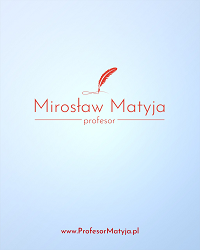Development of Geogebra-Assisted Problem Based Learning (PBL) Learning Tools to Improve Visual Thinking Skills in Mathematical Problem Solving Students of SMA Negeri 1 Samudera
Abstract
Keywords
Full Text:
PDFReferences
Ali, R. (2010). Effect of Using Problem Solving Method in Teaching Mathematicson the Achievement of Mathematics Students. Asian Social Sciense, Vol 6 No 2.
Arcavi, A. (2003). The Role of Visual Representations in the Learning of Mathematics. Journal of Mathematical Education in Science and Technology, 29 (3).
Dick, W. and Carey, L. (1996). The Systematic Design of Instruction (4nd Ed). Glecview, Illionis: Scot, Foresman and Company.
Garderen, D.M., & Montague, M. (2003). Visual-Spatial Representation, Mathematical Problem Solving, and Students of Varying Abilities. Learning Disabilities Research & Practice, 18(4), 254-264.
Guler, G., & Ciltas, A. (2011). The Visual Representation Usage Levels of Mathematics Teachers and Students in Solving Verbal Problems. International Journal of Humanities and Social Science. Vol. 1 No.11.
Hohenwarter, M., et al. (2008). Teaching and Learning Calculus with Free Dynamic Matematics Software Geogebra. Tersedia: https://archive.geogebra.org/static/publications/2008-ICME-TSG16-Calculus-GeoGebra-Paper.pdf [diakses 7 Desember 2017]
Lestari, I. (2018). Pengembangan Bahan Ajar Matematika Dengan Memanfaatkan Geogebra Untuk Meningkatkan Pemahaman Konsep. GAUSS: Jurnal Pendidikan Matematika, 1(1): halaman 26-36. https://www.researchgate.net/publication/328406817_Pengembangan_Bahan_Ajar_Matematika_dengan_Memanfaatkan_Geogebra_untuk_Menin gkatkan_Pemahaman_Konsep. Diakses tanggal 24 Oktober 2018.
Moses, B. (1982). Visualization: A Different Approach to Problem Solving. School Science and Mathematics, 82, 141-147.
Nieveen, N. (1999). Prototyping to reach product quality. In J.v.d.Akker, R. M. Branch, K. Gustafson, N. Nieveen, & T. Plomp (Eds.), Design approaches and tools in education and training (pp. 125-135). Dordrecht: Kluwer academic publishers.
OECD. (2015). PISA 2015 Result in Focus. OECD Publishing (online). https://www.oecd.org/pisa/ [diakses 16 Oktober 2017]
Pohan, A., M., Et al. (2020). The Effect of Problem Based Learning and Learning Motivation of Mathematical Problem Solving Skills of Class 5 Students at SDN 0407 Mondang. Budapest International Research and Critics in Linguistics and Education (BirLE) Journal, 531-539.
Sinaga, B. (2007). Pengembangan Model Pembelajaran Matematika Berdasarkan Masalah Berbasis Budaya Batak (PBM-B3). Disertasi. Surabaya: Program Pascasarjana Universitas Negeri Surabaya.
Surya, E. (2013). Peningkatan Kemampuan Representasi Visual Thinking pada Pemecahan Masalah Matematis dan Kemandirian Belajar Siswa SMP Melalui Pembelajaran Kontekstual. Disertasi. Tidak Terbitkan. Bandung: PPS UPI
Surya, E., & Syahputra, E. (2017). Improving High-Level Thinking Skills by Development of Learning PBL Approach on the Learning Mathematics for Senior High School Students. Canadian Center of Science and Education. 10 (8).
Tarigan, E., E., Et al. (2020). Development of Students Work Sheet Based on Realistic Mathematic Approach with Ethnomatematic nuanced to Improve Critical Thinking of 4th Grade Students in Primary School (SD Negeri 091358 Haranggaol, Haranggaol Horisan Sub-District). Budapest International Research and Critics in Linguistics and Education (BirLE) Journal, 133-143.
Utomo, M., R., Et al. (2020). Influence of Problem Based Learning Models (PBL) and Learning Motivation to Learn Outcomes and Student's Critical Thinking Skills Themes of Caring for Life in Class IV Primary School No 026609 Pujidadi Binjai. Budapest International Research and Critics in Linguistics and Education (BirLE) Journal, 1634-1643.
Yuliani & Saragih. (2015). The Development of Learning Devices Based Guided Discovery Model to Improve Understanding Concept and Critical Thinking Mathematically Ability of Students at Islamic Junior High School of Medan. Journal of Education and Practice, 6 (24).
Zulnaidi & Zamri. (2017). The Effectiveness of the GeoGebra Software: The Intermediary Role of Procedural Knowledge on Students’ Conceptual Knowledge and Their Achievement in Mathematics. EURASIA Journal of Mathematics Science and Technology Education. ISSN: 1305-8223.
DOI: https://doi.org/10.33258/birle.v4i1.1581
DOI (PDF): https://doi.org/10.33258/birle.v4i1.1581.g2022
Article Metrics
Abstract view : 212 timesPDF - 180 times
Refbacks
- There are currently no refbacks.

This work is licensed under a Creative Commons Attribution-ShareAlike 4.0 International License.

This work is licensed under a Creative Commons Attribution-ShareAlike 4.0 International License

_.gif)



















_.gif)



